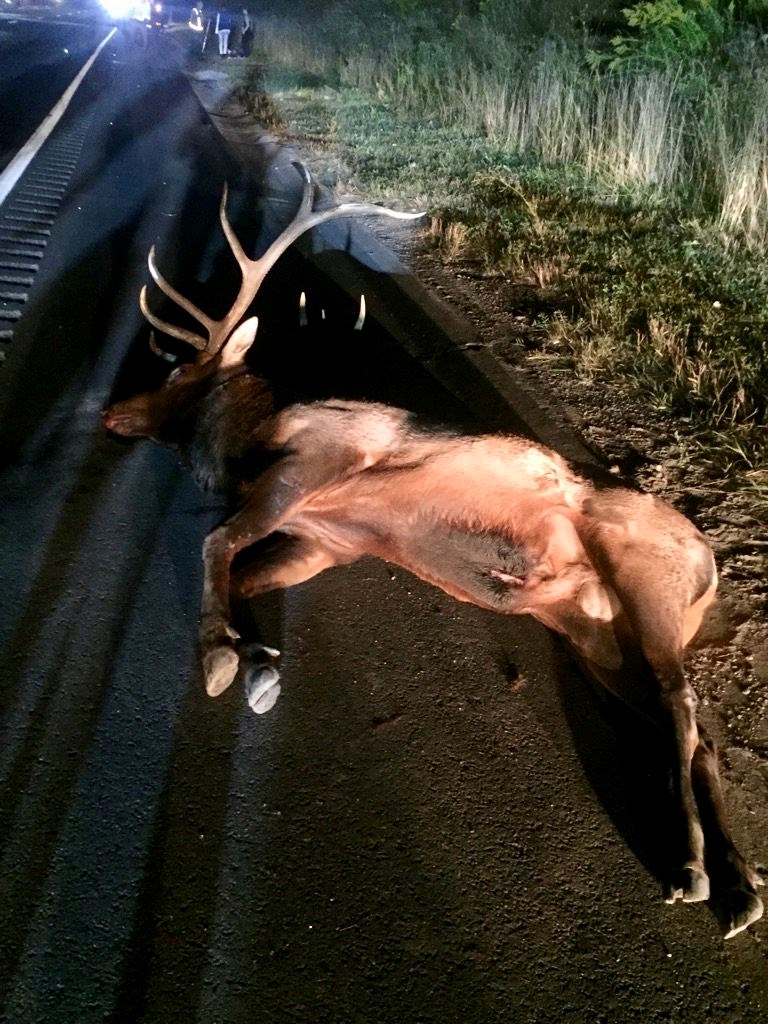The OPP have investigated over 6,000 collisions with wildlife this year, including one on Saturday on Highway 400 at Highway 89.
"You never know what hazards are on the roads," tweeted OPP Sgt. Kerry Schmidt, showing a photo of a deceased elk.
"This was on #Hwy400/Hwy 89. A minute later the car that hit the elk was hit by a drunk driver."
Police say over 300 of the crashes involving animals resulted in injuries and one death.
With the seasonal color changes beginning across the province, many drivers will be out enjoying the scenery and the OPP is reminding all drivers to focus on the road.
"Drivers also need to be aware of their surroundings and scan for animals that may be standing or crossing the roads directly into the path of traffic," the service said in a release.
Over the last three years, the OPP has investigated over 10,000 collisions annually involving wildlife.
Recently, some of those collisions have involved elk, bear and deer. It is also believed that many more collisions involving smaller animals go unreported.
OPP collision data also shows that the spring and fall seasons are when motorists driving in rural areas need to be extra cautious as wildlife become more active.
"It is important to remember that deer, moose and elk crossing signs are only posted where there are frequent sightings or crossings; however, these animals can be seen anywhere at any time," police said.
The OPP is reminding motorists to take the following precautions in order to reduce their risk of becoming involved in a collision with wildlife:
- Scan the road ahead from shoulder-to-shoulder. Moose, elk and deer are particularly active in the spring searching for food, especially at dawn and dusk. Deer rarely travel alone, so when motorists see one there are likely more nearby.
- Watch your speed and be careful when driving at night. Slowing down will give you more time to react.
- Brake firmly if an animal is standing on or crossing the road, and stop if necessary and safe to do so. Swerving to avoid hitting a wild animal may result in a loss of control and a more serious collision. If you do encounter large wildlife such as deer, moose, elk or bears on the road and can safely avoid hitting them, do so, but be absolutely certain that oncoming traffic or soft shoulders do not put you and others at risk.
- Do not direct your full attention to the animal when you take measures to avoid hitting it. Instead, focus your attention on the alternative route you decide to take, again only if this maneuver doesn't place you and others in danger.



